Home » Conservation » Midwestern Bobwhite Quail Conservation: The Time for Action is Now
Midwestern Bobwhite Quail Conservation: The Time for Action is Now
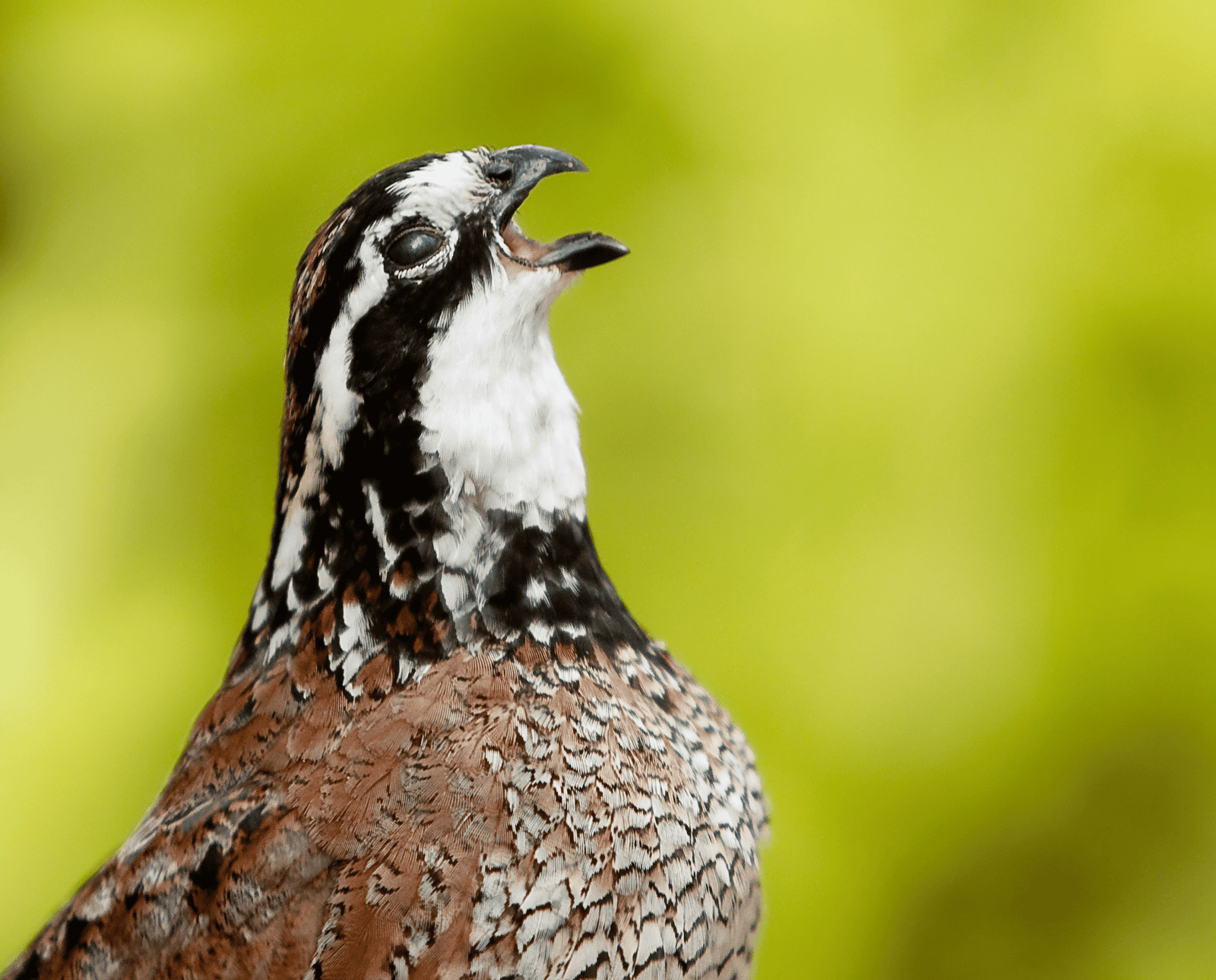
Frank Loncarich has been a wildlife biologist for over 20…
Raised in the upland bird mecca of Kansas, the passion…
Two quail biologists encourage private landowners to take advantage of state and federal habitat management assistance
This story was originally published in the Fall 2024 issue of Project Upland Magazine.
Researchers warned the public about the coming decline in bobwhite quail populations as early as the 1940s. Back then, Midwestern quail hunters experienced large numbers of bobwhite and fantastic hunting conditions. However, by the 1980s, quail populations started to noticeably decrease.
States responded to the decline by enacting intensive quail conservation efforts. These efforts did some good, but they were usually short-term, state-led, and state-funded programs. They lacked the dollars and scope to make a lasting difference. As a result, the population trajectory of bobwhites continued to fall.
In the early 2000s, everyone from local conservation group volunteers to federal wildlife managers realized how dire the bobwhite situation had become. They looked for ways to halt and, hopefully, reverse the decline. Momentum for bobwhite conservation grew, and today, we enjoy unprecedented levels of funding and support for range-wide bobwhite conservation efforts.
Right now, the opportunity to conserve bobwhite quail at the national level is at an all-time high. State and federal natural resource managers are primed to financially and logistically support private landowners looking to create bobwhite habitat. Restoring native grasslands, especially on private lands, will help conserve this iconic game bird across the eastern United States.
Factors Driving The Bobwhite Decline
Reliable survey estimates show that the number of bobwhite in the United States has decreased by more than 80 percent since the 1960s. Pennsylvania recently declared the bobwhite extirpated from the state. New Jersey, Delaware, and West Virginia are translocating birds from other states in an effort to keep their populations from blinking out. Unfortunately, bobwhites are still continuing to decline at a rate of 1–3 percent annually.
A host of factors contribute to the quail decline. However, the number one factor is the astounding rate of bobwhite habitat loss. Highly efficient, intense agricultural production and the loss of native grasslands are two major reasons for habitat reduction. In the Southeast, the lack of prescribed fire is another driver. Where grasslands, savannas, and fire historically dominated the region, closed-canopy forests are taking over.
There are myriad other factors within those large buckets. But increased agricultural production, shrinking grasslands, and a reduction in controlled burning are the three biggest issues threatening the bobwhite’s existence. If habitat conditions do not improve quickly, there is every reason to expect this decline to continue. Within 50 years, bobwhites may become relegated to small, highly isolated populations that require intensive management to persist, otherwise known as a “museum species.”
A New Conservation Model
Despite the challenges facing bobwhite populations, efforts to combat these threats have led to innovative conservation strategies. Recognizing the urgent need for action, the 25 states comprising the bobwhite’s range launched a range-wide collaboration called the National Bobwhite and Grasslands Initiative (NBGI) in the 1990s.
In 2004, the multi-state agency partnership successfully secured the first bobwhite-centric Conservation Reserve Program practice, Habitat Buffers for Upland Birds. Since then, hundreds of thousands of acres of habitat buffers around crop fields have been established throughout the Midwest. They benefit quail, pheasants, and a host of non-game species.
In the last two decades, NBGI has advocated for greater federal attention for bobwhites, raised funds for bobwhite conservation, and coordinated the implementation of bobwhite habitat and monitoring. By combining the efforts of the 25 states, the NBGI has become a force for driving range-wide bobwhite conservation into the future.
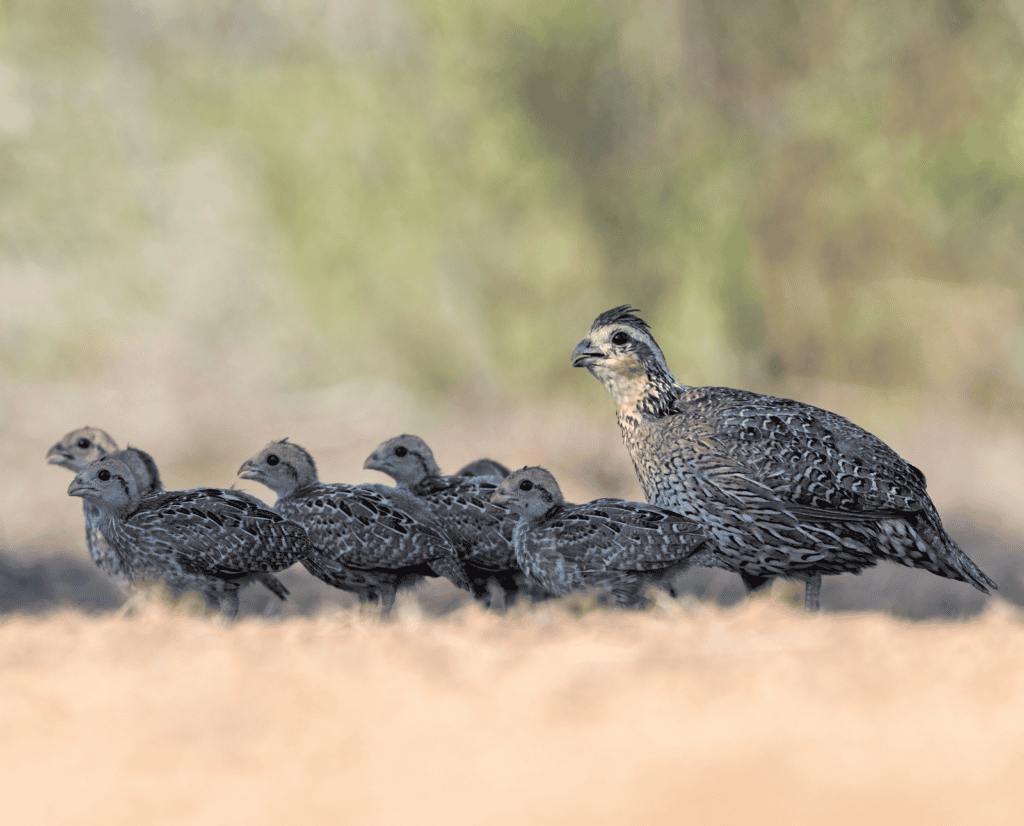
Federal Assistance for Working Lands
There is simply not enough public land across the country to make the landscape-scale changes needed to reverse the multi-state quail decline. If bobwhite populations are to make a comeback, grassland restoration must occur on private working lands.
Making landowners a key part of the bobwhite conservation puzzle requires maintaining or increasing farm incomes. Otherwise, wildlife managers might not make significant headway in their efforts to dig bobwhites out of the hole. Thankfully, state and federal agencies have stepped in and created new programs to help fund habitat restoration on private land.
Bobwhite habitat creation programs available to private landowners include:
- Environmental Quality Incentive Program (EQIP)
- Conservation Reserve Program (CRP)
- State agency cost-share programs
Coupling conservation with working lands benefits all grassland species and helps landowners increase their bottom line through various programs. One example is the Natural Resource Conservation Service’s (NRCS) Working Lands for Wildlife-Bobwhite program.
Read More: The Conservation Reserve Program in 2023
The Working Lands for Wildlife framework provides technical and financial assistance to landowners across the bobwhite’s range. The technical practices it recommends increase the amount of early-successional vegetation and native grasslands on working lands.
A variety of practices, such as planting native grasses and forbs, prescribed burning, and excessive brush removal, are targeted toward working lands. These practices are useful for landowners, especially in the Midwest, because they provide healthy forage for cattle, better grazing distribution, and more space for grasslands as encroaching brush is removed.
The Working Lands for Wildlife program helps landowners increase bobwhite populations across a landscape-level scale, the only scale at which a lasting repopulation of bobwhite quail can occur.
Missouri’s Approach to Quail Conservation
Missouri once had over 15 million acres of native tallgrass prairie; it now has 15 million acres of fescue. This massive, landscape-level shift to fescue forage has spelled doom for bobwhite populations in this region.
Impacts of Nonnative Fescue
Tall fescue is an exotic, cool-season grass introduced to the mid-South in the 1960s and 1970s. It comprises the vast majority of the cattle forage base in Missouri because it establishes itself easily, tolerates heavy grazing pressure, and vigorously responds to nitrogen fertilizers. Today, it dominates mid-latitude grazing lands from eastern Kansas to North Carolina.
If one set out to devise a plant utterly detrimental to bobwhite survival, no better one could be created. Fescue is a sod-forming grass that, when ungrazed and left for hay production, creates a mat of vegetation. Young and adult quail alike cannot navigate grass this thick. Bobwhite and other grassland birds are often forced to nest in fescue fields because it is the only grassland around. However, these nests suffer high rates of loss because fescue hay is cut right in the heart of the incubation season.
Grazed fescue fields are no better. Because fescue is sod-forming, there is little room for weeds and forbs. Herbaceous plants are vital for bobwhites because they attract insects and produce large amounts of nutritious seeds. Additionally, because fescue can withstand heavy grazing pressure, fields are often grazed down to ground level, leaving no cover for bobwhite, or really anything, for that matter.
Read More: How Rainfall Influences Quail Populations
If fescue has one Achilles’ heel, it is drought. Missouri has suffered drought over the last few years, severe enough to cripple some producers who are heavily reliant on fescue forage.
Missouri Native Forages Initiative
In 2023, Missouri NRCS, along with a host of partners, embarked on a new initiative. Its goal is to increase the amount of drought-tolerant native grasslands to mitigate the effects of the multi-year drought. This program is called the Missouri Native Forages Initiative (NFI).
The NFI provides cost-share assistance to landowners interested in replacing a portion of their grazing operation with a mix of native warm-season grasses and forbs. During the summer, native grasses provide superior weight gains for cattle compared to fescue. They also have the added benefit of creating excellent nesting and brood-rearing conditions for bobwhite. As of this writing, $6.5 million has been allocated through the NFI, equating to over 14,000 acres of beneficial grasslands added to the state. This will have a profound effect on the amount of usable space for bobwhites in the years to come.
This Missouri-based collaboration is a fantastic example of how valuable and important linking working lands and conservation together can be. Providing resources to landowners so they can add quail habitat to their lands will not only benefit the rancher and the quail but also create an entire suite of beneficial ecosystem services.
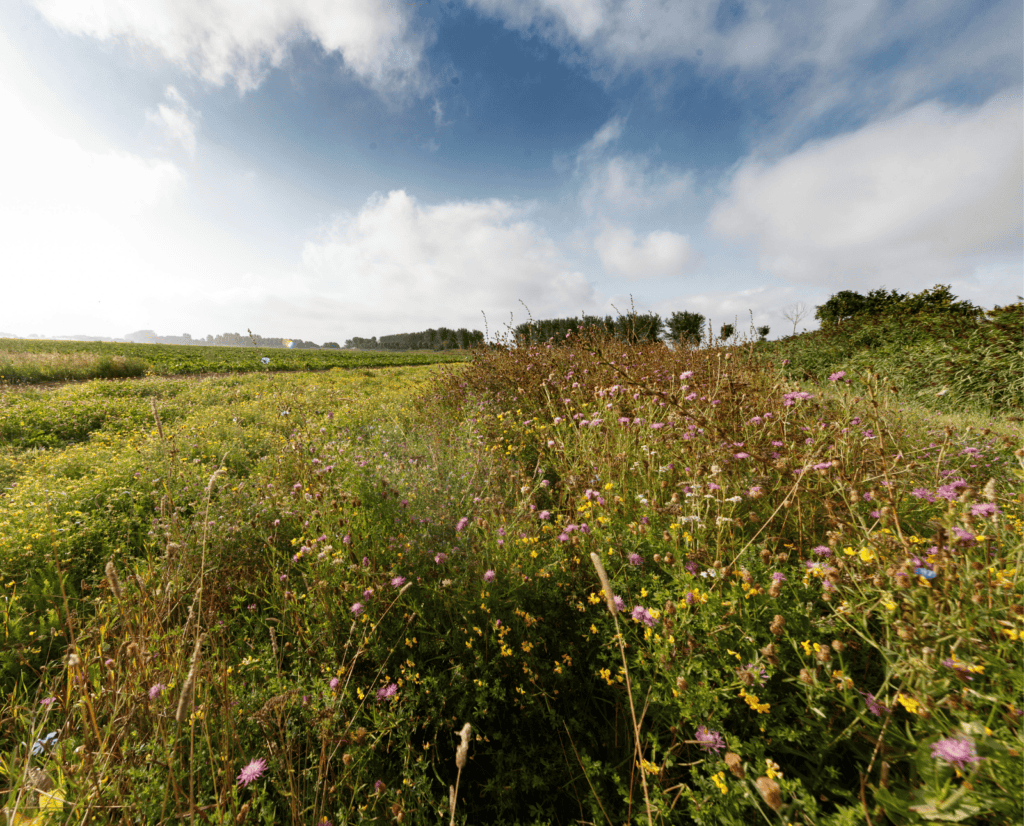
Let’s Bring Bobwhite Quail Back
Large, intact areas of native herbaceous vegetation, including grasslands and open savannas, are needed to bring bobwhite populations back. This fact has not been a secret. Fred Guthery, the eminent retired quail ecologist and researcher, preached the idea of usable space across large areas as the solution for managing bobwhite during his 30+ year career. The problem has been how to incentivize landowners on a large scale to make these changes to the landscape.
Thankfully, as we have discussed, there are now numerous resources to help landowners create quail habitat. The best thing Midwestern landowners who have the means to manage for bobwhites can do is work with their state or a federal agency to plant native warm-season grasses and forbs.
These plants provide excellent nesting habitat. With proper management, their brood habitat potential is second to none. However, planting native grasses and forbs requires planning; establishing these plants is not like planting an agricultural crop. It takes significant site preparation to get a successful stand. And you’ll want a diverse stand, one with different grasses and forbs providing a variety of structure, to meet all of the bobwhite’s life history needs.
Fortunately, there are plenty of experienced biologists across the Midwest who can help landowners design, prepare for, plant, and manage stands of native herbaceous plants. Patching together small blocks of native plantings in close proximity will allow birds to colonize previously void areas. This is the sorely needed landscape-level change bobwhite need to finally turn their populations around.
Landowners Are Part Of The Solution
Landowners are needed to successfully restore quail; the techniques, dollars, and technical advice are out there to help you get started. If you’re interested in planting quail habitat on your property, give your local state wildlife agency office a call. These folks will provide information on state-specific technical and financial assistance available in your area and can get you in contact with the appropriate federal office to help with programs such as EQIP and CRP. There are also private consulting firms that offer tailor-made services for private landowners.
Whichever program you use is up to you. Just make the call! Most of the landscape in the Midwest is becoming even more hostile to bobwhite. The continued loss of native grasslands and extensive tree expansion into historically productive grassland habitats reduce bobwhite habitat year after year. Thankfully, there has never been more attention on the plight of the bobwhite. Nor has there ever been more money dedicated to the cause. If we want to keep bobwhite on the landscape, we must act together today.
Frank Loncarich has been a wildlife biologist for over 20 years, specializing in bobwhite and grassland management. He is also a Habitat Consultant for Land and Legacy.
Raised in the upland bird mecca of Kansas, the passion for upland birds was born at a young age for Kyle Hedges. He has now spent over 25 years managing upland game habitat on public lands in Kansas and Missouri for State Conservation Agencies. He also works as a Habitat Consultant for Land and Legacy, assisting landowners across the country with improving their properties.

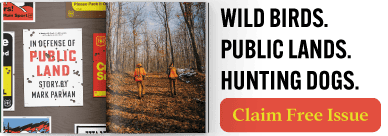
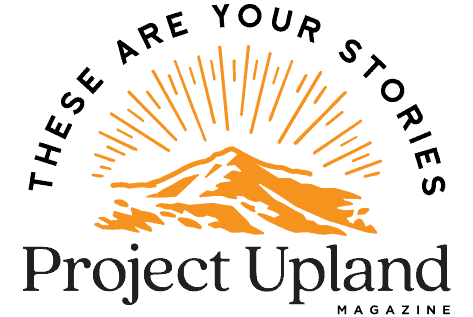
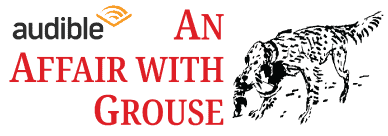
Good article; however, MAGA’s Project 2025 is in the process to remove these Programs. Being from Kansas I am certain you voted for Trump, now your livelihood is going to be significantly impacted, and these Conservation Measures are going to be withdrawn. I commend both of you for your careers, but you forgot to look at the fine print of Project 2025 when you voted.
Nonsense, just another anti-Trumper mouthing off about something they no nothing about.
I hunted what should have been excellent public land for quail in Missouri on November first. No quail were spotted and nobody else was hunting quail either. I don’t remember hearing any shots.
Opening day in MO can be very fickle. The weather is usually warmer than preferred and birds haven’t always committed to their winter haunts yet. We found 3 coveys opening morning this year, but had a terrible time finding downed birds. Heavy dew made everything dripping wet. It was an odd opener this year, at least for us. Were you hunting north MO or south?
Thank you for the great article. No matter who’s in charge of the White House we need to lobby our representatives to protect and enhance habitat for upland birds and other wildlife! I did not vote for Trump, but perhaps his staff can be persuaded to support these critical initiatives if they hear from enough of us. We are all in this fight together!